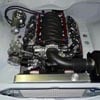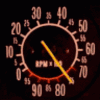I like to think of the whole assembly mass as the issue, crank, rods, pistons, balancer and flywheel... I guess its a balance (pardon the pun) between weights of assembly... I would not hesitate to use a knife edge crank from someone who has plenty of experience in machining them (like Mick), as the weight is still more than a red crank anyway (from memory). Also, I think the whole package has to be considered- cam duration, final gearing, transmission etc etc are important as the light set-up may not suit some packages.-
I think you hit the nail on the head - it's the whole assembly that counts. The total weight is a matter of personal preference but I think how the weight is distributed matters.
Obviously the pistons and rods should be as light as they possibly can be; weight here causes a whole bunch of problems.
The next thing then is how much weight do you have in the crank and how much in the flywheel and balancer? The trouble here is that we have conflicting requirements. Every time we take weight off the counterweights we make life harder for the block, and this might be an issue for a very high revving engine.
But if we leave the crank at full weight and use a super-light flywheel then we get clutch failures and so on from the torsional vibrations being channelled towards the back. Whatever we do is going to be a compromise.
Probably the best thing to do would be use the lightest pistons and rods that are affordable along with a moderately light flywheel, and then if more weight still needs to come off then trim it from the crank, ideally in a way that doesn't reduce the effective bobweight too much.
Edited by oldjohnno, 30 June 2015 - 08:03 AM.






 View Garage
View Garage













